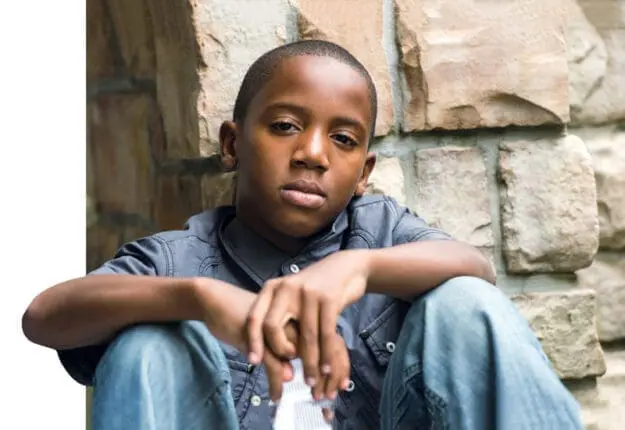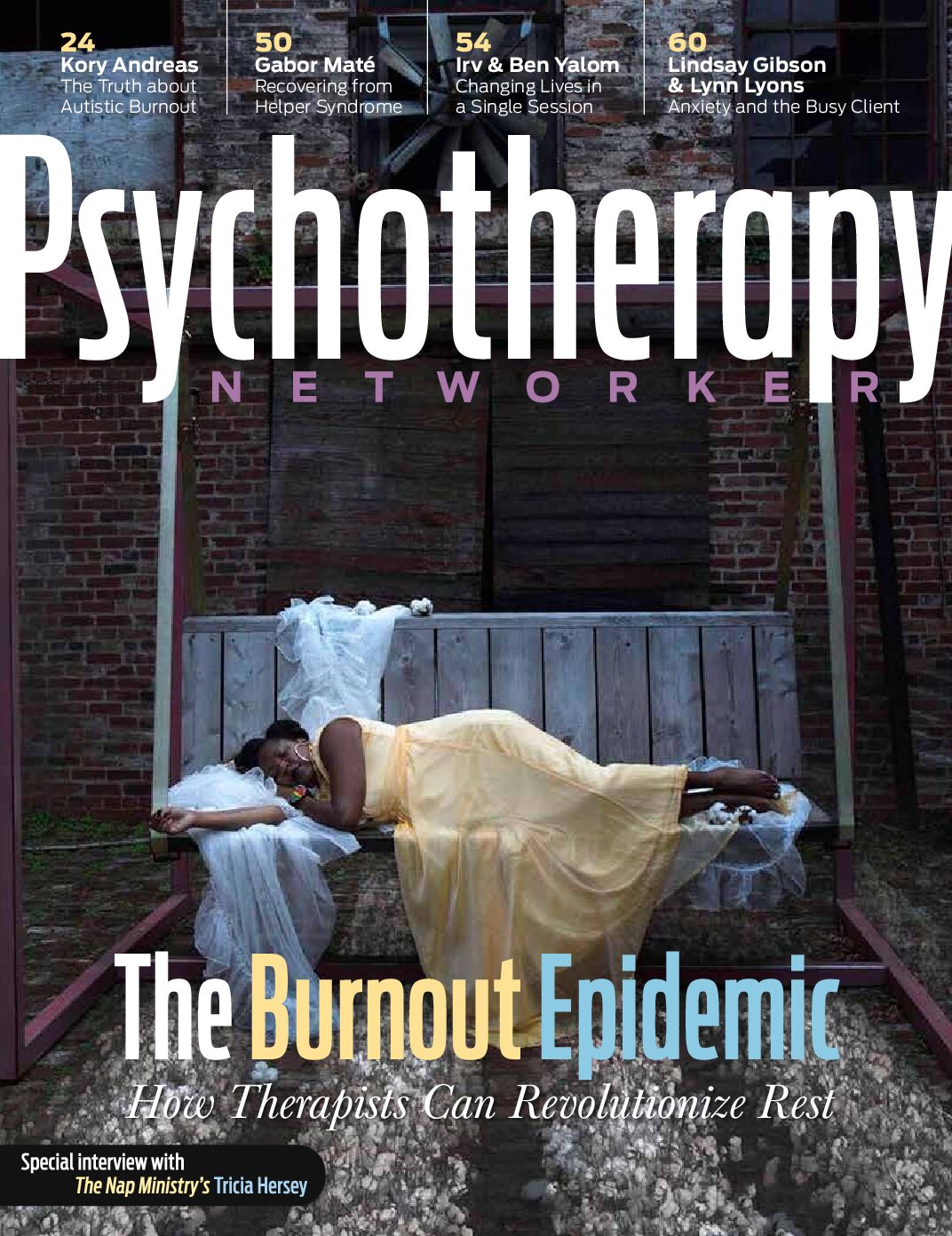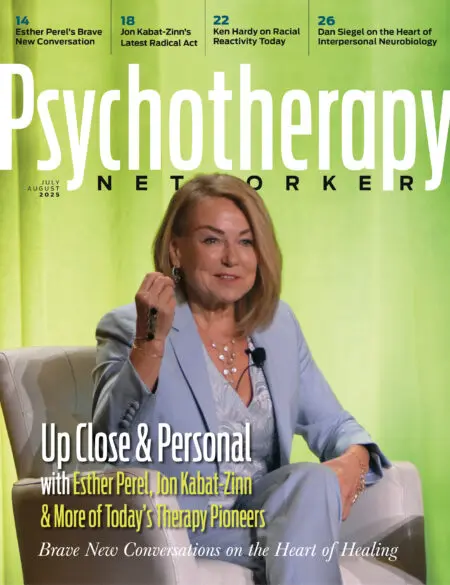During a session back in 2016, Trevor, a student at the high school where I worked, quietly told me he felt suicidal. Assuming that he simply wished to escape painful feelings, I validated the normalcy of his emotional response to school and family stressors. But, with his head in hands, he started to describe daily experiences directly linked to the structural racism that pervades this country: in the school system, at his job at the grocery store, on the streets where he lived, even in his living room: “Every time I turn on the TV,” he said, “I see what happens to boys like me.”
I couldn’t help but remember that moment with Trevor when I stumbled across a Opinion piece last December, by clinical psychologist Inger E. Burnett-Zeigler. In “Young Black People Are Killing Themselves,” she presented some sobering statistics: between 2001 to 2017, the rate of death by suicide for Black boys ages 13 to 19 rose 60 percent. For Black girls, it rose nearly 182 percent. Compare this to a 33 percent increase in overall suicide rates between 1999 to 2017, and it’s clear that something is disproportionately affecting Black kids.
When it comes to making sense of statistics like these, not enough mental health professionals have been trained to look at the sociological context. Sure enough, Burnett-Zeigler gives us this context, highlighting the inevitable ineffectiveness of clinical interventions that fail to consider the stress and trauma that the dominance of white culture in our society causes to people of color. Tracing the Black youth suicide epidemic back to systemic barriers and pitfalls like job discrimination, police brutality, and the school-to-prison pipeline, Burnett-Zeigler’s piece is a wake-up call to all therapists.
Our cultural competence training needs a large helping of what Brazilian educational theorist Paulo Freire called conscientization, a process of “identifying contradictions in experience through dialogue and becoming part of the process of changing the world,” and “engaging in praxis, in which one both reflects and takes action on their social reality to break through prevailing mythologies and reach new levels of awareness—in particular, awareness of oppression.”
In my clinical work right now, I’m discovering how to address the disparities I see between the lives of children of color and white children. I saw these disparities in my previous work as a school counselor as well. I’ve witnessed authority figures, like teachers and school staff, respond inadequately, dismissively, and even inappropriately to Black youth who engage in self-harm, like cutting or head banging. Self-harm is not a culturally specific phenomenon, but in the public school system, I’ve watched Black youth being written off because of implicit bias that associates self-harm with white youth culture, overlooking the structural inequities that contribute to Black kids’ feelings of demoralization and hopelessness.
During my graduate training in counseling at the University of Pennsylvania, I decided to use my position to give back to the surrounding community. Through my department’s community partnership program, I chose internships where I could provide free therapy to disadvantaged youth in schools, splitting my time between a public school for younger kids and a charter school for teens. In both schools, most of the kids received free lunch and came from working-class or impoverished families. Philadelphia, after all, is the nation’s poorest large city, and for decades, its education system has been chronically underfunded. One in four residents hasn’t progressed beyond the ninth grade.
I’d often consult with teachers who denied or doubted that so-called bad students who were acting out could feel depressed or suicidal. They failed to realize that an inability to communicate or cope with emotional stress often shows up as misbehavior—meaning that noncompliant students sometimes need our help the most. Instead, I saw the instinct to punish, which I suspect was based on racial stereotypes about students’ lack of innocence and morals.
Many educators I worked with seemed to carry biases that decontextualized their students’ struggles. They often interpreted apathetic, combative, and disruptive behaviors as deliberate malice, rather than byproducts of issues going on at home, like a lack of emotional support because a parent was working two or even three jobs to support the household.
I saw biases and stereotypes play out along gender lines that escalated power struggles between Black girls and teachers, like the Angry Black Woman trope and the stereotype that Black girls have a sassy attitude. Carissa, a senior slated to graduate in the top five percent of her class, was one victim. Her calculus teacher repeatedly scolded her for talking out of turn, and before Carissa could finish explaining herself, he’d write her up for talking back. It turns out that Carissa was trying to help several classmates keep up with the instructor’s fast-paced lectures, and she even tutored them outside of class, essentially doing this teacher a favor.
Carissa, like many well-intentioned yet misunderstood Black girls, was facing the harsh reality that her teacher could see only what he already believed: that her attempts to reason with him were evidence of a tough, abrasive demeanor. Particularly in schools that have a significant cultural gap between teachers and students, Black girls often find their firm but deferential requests for respect misconstrued as demands for control, when, in reality, they’ve actually been socialized by elders to hold authority figures in high regard. I saw many educators adultify Black girls, as Carissa’s teacher did, by responding to their missteps with disciplinary action that was often harsher than many would consider developmentally appropriate. I never saw the same punitive—even retaliatory—actions taken with white girls, even when they misbehaved.
The Black boys I worked with were similarly misunderstood, sometimes even by their own families. I still remember working with one of my favorite students, Marshall, a Black boy who was precociously creative, intuitive, and self-reflective. “When was the last time you felt this angry and depressed?” I asked him during one of our sessions.
“Oh, probably when I got hospitalized,” Marshall replied, rolling up a sleeve to show me the keloids from where he’d slashed his wrists. He went on to share that several family members had been teasing him, repeatedly calling him slow and soft. It had pushed him to his limit, he told me.
There’s a common misconception that Black youth self-sabotage by suppressing their pain, that they’re reluctant to open up to family or friends. But Marshall’s case proved otherwise. It showed me that desensitization to Black pain and suffering leads white educators to unconsciously adultify Black children. Sometimes, it leads Black caregivers to inadvertently reinforce the same adultification in the name of tough love.
We need to do better. Research shows that police often misperceive Black boys as older and less innocent than white kids the same age, that employers discriminate disproportionately against teenage Black boys, perpetuating generational poverty, and that preschool teachers mislabel Black boys as young as four as more disruptive, rather than just energetic. Sadly, this type of institutional, systemic disempowerment drives some children who already suffer from depression not only to overreact defensively, but to harm themselves.
Until advocates, educators, clinicians, policymakers, and researchers acknowledge how society stereotypes Black children as more grown up and forces them to grow up faster, the Black youth suicide epidemic will remain a problem.
Changing the Language
On the whole, our society views suicide primarily as a personal choice, something of a public health problem. Rarely does it think of suicide as a pervasive structural problem, inextricably linked to social inequities. This misguided notion prevents us from developing specific interventions for minoritized and underserved groups. For things to change, we first need to shift the language we use to frame and discuss mental health disparities.
Despite years of education, training, and supervision, most mental health practitioners never learn that no cultural or social identity is a risk factor, in and of itself. Rarely is the scope of a graduate course deep enough to reframe risk as the structural impediments, stigma, violence, vulnerability, and exploitation that many minoritized groups often face because the dominant culture others their identity on the basis of supposed cultural deficit or inferiority.
Why is acknowledging this nuance important? Often, the categories, identities, and labels we use are the language of marginalization, developed by those with privilege. When discussions about identity and disparities are devoid of context, it becomes harder to hold institutions and leaders accountable, undo toxic elements of the status quo, and effect real change.
If we hesitate to name the actual risk factors for what they are (ableism, capitalism, classism, homophobia, patriarchy, xenophobia, white supremacy), it’s because too many of us are unwilling to examine our own complicity in the oppression of marginalized groups. Talking about our possible role in supporting harmful power structures and the way we benefit from them isn’t an easy conversation to have. It can be uncomfortable, especially for therapists who consider themselves to be allies.
In the multiculturalism courses I’ve participated in, I’ve found that white graduate students generally aren’t pushed out of their comfort zones or properly guided when it comes to confronting defensiveness, entitlement, and guilt about racial privilege. I’ve also found that white clinicians who aren’t pushed out of their comfort zones can become willfully ignorant about their implicit biases and racial socialization.
So how exactly does reframing risk and confronting our privilege within power structures empower Black youth? I believe that it makes them feel less pressure to demonstrate superhuman grit. The word grit has entered the mainstream recently, partially due to the work of psychologist and author Angela Duckworth, who defines it as “passion and sustained persistence applied toward long-term achievement, with no particular concern for rewards.”
Grit stresses personal responsibility as the most appropriate pathway out of inequity. Of course, discipline, self-regulation, and dedication are factors in personal success, but the concept is flawed when it comes to addressing centuries of oppression. Grit places the onus on minority groups to become perfect, overachieving, respectable model minorities.
We need to remember that society forces grit on many Black children. Many have learned to navigate adversity, pitfalls, and seemingly insurmountable obstacles from an early age. They don’t need a graduate course to fine-tune their work ethic. They’ve paid bills and raised siblings while maintaining good grades and studying for the ACT at the public library. The pressure that they face in mostly white schools and suburbs to conform and outperform can take a toll on their mental and physical health.
The notion that Black kids lack grit is devoid of empathy. Focusing on what they lack instead of cultivating their strengths and leveraging their assets does little to empower them. Even worse, it’s victim-blaming and absolves those who are complicit in protecting their own self-interest by preserving the status quo. We need to supplant the glorification of grit with a strength-based view of how Black children survive despite pervasive anti-Blackness.
Taking the Bus
Clinicians working in community-based mental health settings like clinics or public schools need to actually spend time in the communities where their clients live. If your only exposure to your client’s neighborhood is your drive to and from work, any attempt at offering affirming, culturally relevant treatment will be a lost cause. Seriously addressing disparities means making an effort to become intimately familiar with the everyday realities of the underserved.
I learned this firsthand. In graduate school, I made a point of taking public transportation into North Philadelphia, where I interned, far away from the bubble of the University of Pennsylvania and downtown tourist destinations and into the more segregated, neglected, economically disadvantaged communities on the city’s outskirts. This exposure was key to developing a trusting, therapeutic bond with my beloved students.
It was something I needed to do, even as a Black person. Despite elements of identity that my students and I shared, I felt a vast gulf between my reality and theirs. I’d come from a middle-class family, from schools that serve predominantly upper-middle class communities. Impoverished communities weren’t new to me, but I was still unsettled by witnessing the degree to which under-resourced communities in major cities are left to fend for themselves. In contrast to downtown, it seemed as if Philadelphia’s city government was actively divesting from communities farther north, as if to say, No one there is going to contribute economic growth, so why would we clean it up or improve the infrastructure? Why would we be concerned with the kids’ nutrition there or the environmental hazards from power plants? Or that their schools have no librarians or new books?
Certainly not all Black communities are impoverished. Yet many of them suffer from the legacy of segregation and present-day divestment, gentrification, and redlining. Unless you go there and immerse yourself in the community regularly, you’ll never fully grasp the daily realities of Black kids who live there. You’ll never get the chance to witness these kids’ dignity. To confront these realities is to disturb one’s conscience. It’s humbling and leaves us disillusioned and compelled to take urgent action. It’s an education in and of itself––an awakening.
Experiencing these communities on foot and by train, rather than taking an Uber directly to the front door, deepened my passion, not only for doing counseling in underserved communities, but for becoming an advocate who tirelessly pursues their empowerment and liberation.
Today, I see my work as a therapist as more than just a career. I’m serving these communities with a resolute commitment to equity and justice, and a vision rooted in radical empathy. I’ve spent the last few years doing community education and organizing, creating accessible resources and safety nets, critiquing research and theory, and engaging counselors and teachers in discussions that shift the discourse from talk about diversity to talk of anti-oppression, from cultural competence to structural competence.
My hope is that when people read articles about Black youth and self-harm, like Burnett-Zeigler’s Times piece from last December, they grasp the larger social context of this crisis, as well as the innovative, self-reflective, sociopolitically informed, and subversive approaches it demands.
PHOTO © ISTOCK/JUAN MONINO
Araya Baker
Araya Baker, M.Phil.Ed, EdM, is a psychotherapist and former school counselor who specializes in the identity formation, socialization, spiritual development, and trauma recovery of minoritized populations. Baker also develops and researches equity-focused assessment tools for counselor education.













